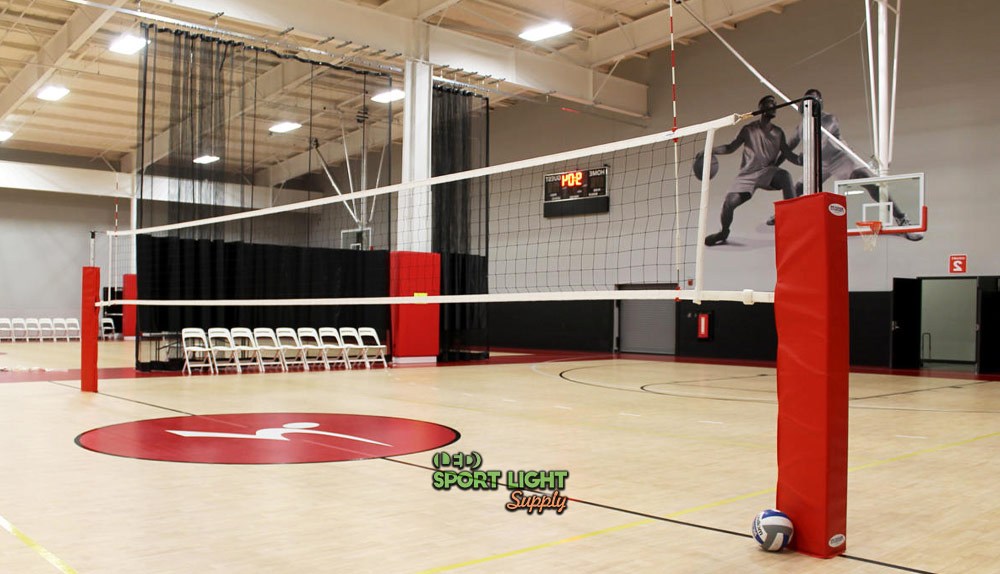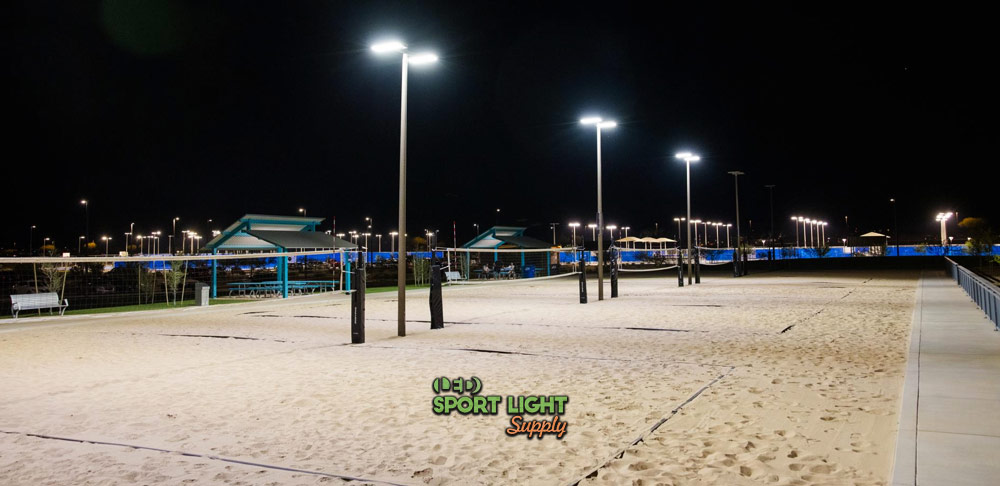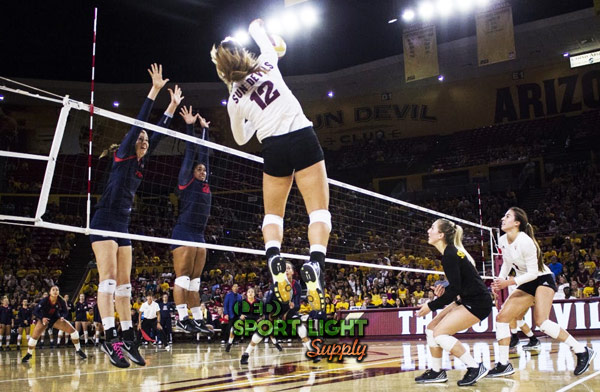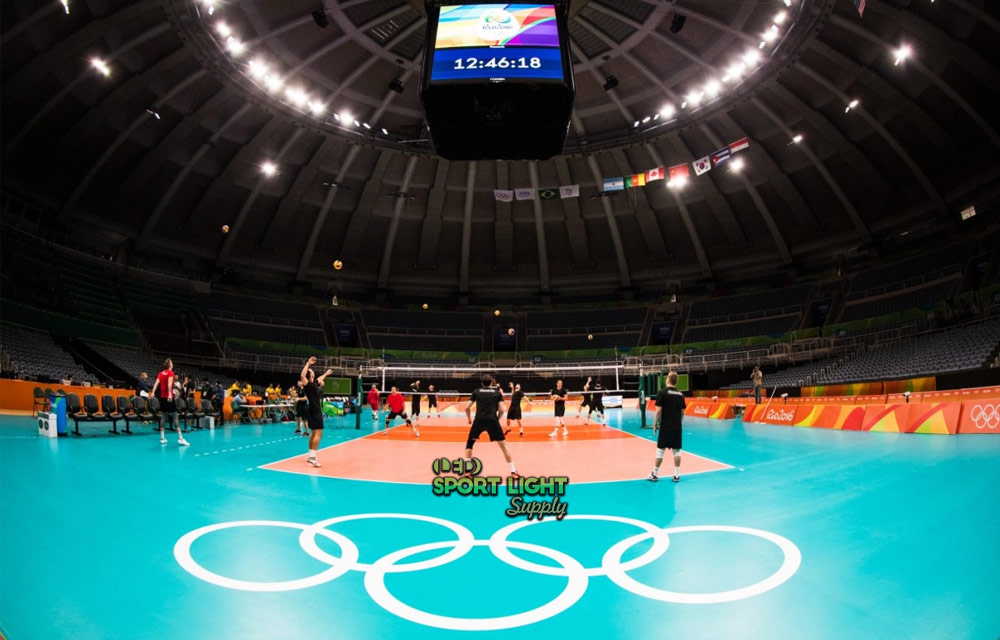Table of Contents
ToggleWhy Should Volleyball Court Lighting Standards Be Measured in Lux?
Artificial lighting plays a crucial role in defining our surroundings, influencing the perception of space and geometry much like physical structures such as walls and coatings. In sports venues, such as volleyball courts, effective lighting is essential not only for visibility but also for player safety and performance.
The Importance of Lighting Standards
Lighting standards are established to ensure that environments are comfortable and safe. These standards are developed through collaborative efforts of specialized committees and are updated periodically to incorporate advancements in lighting technology. This approach ensures that lighting requirements reflect the latest developments and maintain consistency across various applications.
The Need for a Unified Measurement Unit
To accurately assess and implement lighting standards, a consistent method of measurement is necessary. This consistency is crucial for determining whether a lighting fixture provides adequate illumination or falls short. For this reason, a universal unit of measurement is used globally: the lux.

Understanding Lux
Lux (lx) is a unit that measures the amount of light that falls on a given surface area. Specifically, it represents the ratio of luminous flux to the area over which the light is distributed. In practical terms, lux measures the illuminance of a surface.
In contrast to lumen, which measures the total amount of light emitted by a source, lux focuses on the intensity of light on a specific area. For instance, a lighting standard for a volleyball court might stipulate 200 lux. This value helps in determining the number of lamps needed to achieve the desired illumination level. Unlike lumen, which does not account for factors such as installation height and light distribution, lux provides a more accurate measure for evaluating lighting adequacy on the court.
Factors Influencing Lighting Requirements
Several factors can affect how many lights are needed to meet the required lux level, including:
| Factor | Description |
|---|---|
| Installation Height | The height at which lights are mounted affects light distribution and intensity. |
| Positioning of Lights | The arrangement of lights impacts coverage and uniformity. |
| Light Distribution | How light spreads from fixtures determines effective coverage. |
| Level of Competition | Higher competition levels may require brighter, more uniform lighting. |
| Presence of Broadcasters | Additional lighting may be needed for TV broadcasts and media coverage. |
Lux as a Global Standard
Lux is recognized as the official unit of illuminance in the International System of Units (SI) and is widely used around the world. However, some countries, including the USA, use different units such as the foot-candle (1 fc = 10.76 lux). Despite these variations, lux remains the preferred unit for setting and measuring lighting standards in most contexts.
Higher Power Consumption Doesn’t Necessarily Mean Brighter Lighting

There is a common misconception that higher wattage in a light source directly correlates with increased brightness. However, this belief is not accurate. The brightness of a light source depends on its luminous efficacy, which is the efficiency with which electrical power is converted into visible light.
Understanding Luminous Efficacy
Luminous efficacy varies significantly among different types of lighting technologies. It is measured in lumens per watt (lm/W), where lumens indicate the total amount of visible light emitted, and watts represent the amount of power consumed. Here is a comparison of the luminous efficacy of various light sources:
| Light Source | Luminous Efficacy (lm/W) |
|---|---|
| Incandescent | 5 to 10 |
| Halogen | 10 to 15 |
| Metal Halide | 65 to 90 |
| Fluorescent | 80 to 100 |
| LED | 130 to 180 |
As illustrated, different lighting technologies have varying levels of efficacy. For example, LEDs offer significantly higher luminous efficacy compared to incandescent bulbs. This means that LEDs produce more light per watt of power consumed, making them more efficient and effective for lighting applications.
Why Lux is a Better Measure for Lighting Standards
When determining the appropriate lighting for a volleyball court, lux is the preferred unit of measurement rather than wattage. Lux measures the illuminance or the amount of light falling on a specific area, which directly relates to how well-lit the space is. Wattage alone does not provide a complete picture of lighting effectiveness since it does not account for the efficiency of light conversion.
In practical terms, knowing the lux level required for a volleyball court is more useful for ensuring adequate lighting than focusing on the wattage of light fixtures. The choice of lighting technology and its luminous efficacy will determine how many lights are needed to meet the desired illuminance level, ultimately ensuring optimal visibility and performance for various volleyball activities.
Lux Requirements for Volleyball Court Lighting
The illuminance required for volleyball court lighting varies depending on the level of play and the purpose of the lighting. Different scenarios demand different lux levels to ensure adequate visibility and performance. Here’s an overview of the lux requirements for various types of volleyball courts:
Residential or Training Courts: 200 to 400 Lux

For residential or training volleyball courts, the lighting requirements are relatively modest. This range of 200 to 400 lux (19 to 37 foot-candles) is sufficient for casual practice and drills.
Training sessions often focus on fundamental skills, such as bumping and setting, which do not require intense lighting. On sand volleyball courts, lower lux levels are generally adequate to avoid injuries and ensure safe play. The goal here is to provide just enough light to support skill development while minimizing the risk of accidents.

High School, College, or Local Competition: 500 Lux
In high school, college, or local competition settings, the lighting needs become more demanding. A lux level of 500 (46 foot-candles) ensures that the court is well-lit for competitive play and spectator enjoyment.
For example, high school and college tournaments, such as the US Volleyball Open National Championship, require enhanced lighting to accommodate a wider age range and competitive play. Proper lighting in these environments supports player performance and helps maintain a high standard of visibility for both players and spectators.
Regional Broadcast: 800 Lux
When it comes to regional broadcasts, a lux level of 800 (74 foot-candles) is necessary to meet the requirements of television coverage. This higher illuminance ensures that the details of the game are captured clearly by broadcast cameras, providing high-quality video for viewers.
Broadcast lighting must be carefully controlled to avoid flicker, which can disrupt recording and streaming. Optimal lux levels help achieve clear contrasts and realistic colors, making the viewing experience more enjoyable and professional.
National Broadcast: 1,000 Lux

For national broadcasts, the lighting standard is even higher, with a requirement of 1,000 lux (93 foot-candles). This level of illumination is ideal for live coverage of major volleyball events, ensuring that video cameras capture every detail with exceptional clarity.
High-quality lighting at this level helps convey the atmosphere of the event, providing viewers with an immersive experience. It enhances contrast, color accuracy, and reduces shadows, all of which contribute to a more engaging broadcast of first-class athletic performances.
In summary, the lux requirements for volleyball court lighting vary significantly based on the level of play and the intended use. From casual training to national broadcasts, appropriate lighting ensures both safety and optimal visibility for players and spectators.
How to Measure Lux Values in a Volleyball Court
Accurately measuring lux values is crucial for ensuring proper lighting on a volleyball court. There are two primary methods for measuring illuminance: using a physical lux meter or a smartphone app.
Using a Physical Lux Meter
A physical lux meter is a professional tool designed specifically for measuring light intensity. To ensure accurate and reliable readings, it’s important to choose a lux meter that meets the following criteria:
Sensor Quality
The sensor in a lux meter is essential for capturing light levels accurately. A high-quality sensor should mimic the human eye’s sensitivity to different colors and wavelengths. For instance, the sensor should be able to detect light levels in a way similar to how our eyes perceive yellow and green light more effectively than red or blue light.
V-Lambda Curve
A lux meter that uses the V(λ) curve, also known as the daytime curve, is preferable. This curve represents the spectral sensitivity of the human eye and ensures that the measurements reflect how people perceive light. Devices that follow this curve provide readings that are more relevant to human vision and lighting standards.
User-Friendly Design
A lux meter with an intuitive interface and well-structured menu enhances ease of use and measurement accuracy. A user-friendly design minimizes the risk of errors caused by incorrect settings or entries, which can occur even with experienced users.
Display Size
A large display on a lux meter allows for quick and accurate reading of measurements. This feature is especially useful when conducting multiple or recurring tests, as it helps avoid errors and ensures that data is recorded correctly.
Using a Smartphone App
Recent advancements have introduced smartphone apps that can measure lux values using the front camera. These apps are available for both Android and iPhone devices and offer a convenient alternative for estimating illuminance levels.
Sensor Accuracy
The accuracy of lux measurement apps largely depends on the quality of the smartphone’s front camera sensor. Higher-quality sensors generally provide more reliable readings. While these apps can give you a general idea of the lux levels on your volleyball court, they are not as precise as professional lux meters.
Calibration
Smartphone apps can be useful for basic calibration and for determining lux levels at lower settings, such as for training or recreational use. However, for more accurate and professional results, especially for higher standards of lighting such as for competitive play or broadcasting, it is advisable to rely on detailed photometric reports from professionals.
Conclusion
While a physical lux meter offers the most accurate and reliable readings, especially for detailed and professional applications, smartphone apps provide a convenient tool for basic assessments and calibration. By understanding the different methods of measuring illuminance and selecting the appropriate tools, you can ensure optimal lighting conditions that enhance both player performance and viewer experience.
